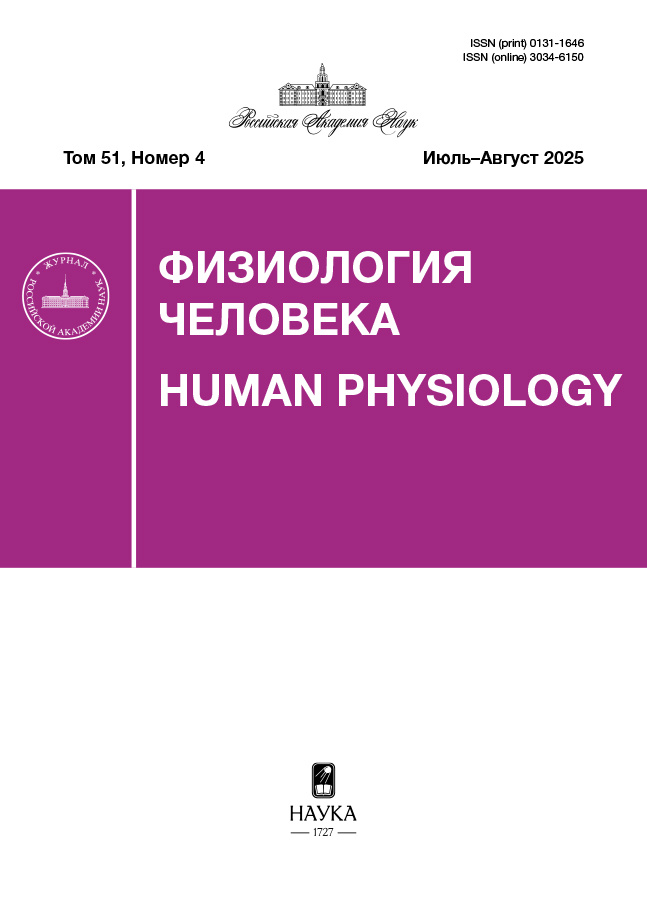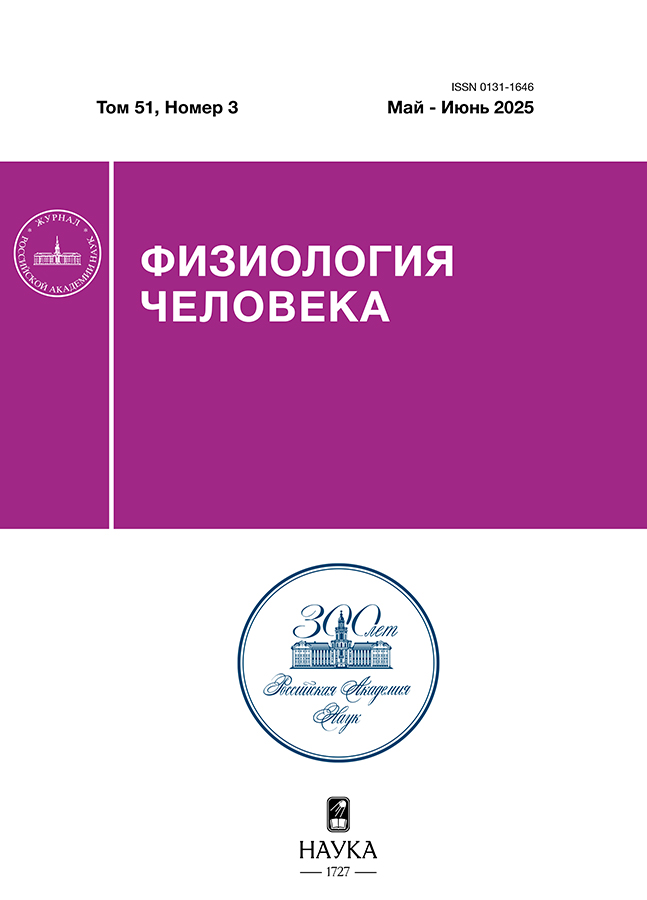Resting-state gamma-band activity at clinical high risk for schizophrenia: correlation with clinical measures and levels of GABA and glutamate in frontal lobes
- Authors: Lebedeva I.S.1, Tomyshev A.S.1, Omelchenko M.A.1, Ublinskiy M.V.2, Akhadov T.A.2, Kaleda V.G.1
-
Affiliations:
- Mental Health Research Center
- Children's Clinical and Research Institute of Emergency Surgery and Trauma of Moscow Healthcare Department
- Issue: Vol 51, No 3 (2025)
- Pages: 3-13
- Section: Articles
- URL: https://ter-arkhiv.ru/0131-1646/article/view/684019
- DOI: https://doi.org/10.31857/S0131164625030014
- EDN: https://elibrary.ru/TSKLKN
- ID: 684019
Cite item
Abstract
Gamma-band abnormalities are consistently reported in schizophrenia and attributed to disturbances of the excitation-inhibition balance in the brain. However, results in clinical high-risk groups are rare and quite inconsistent. The aim of the present study was to determine the characteristics of the resting-state gamma-band activity (range 30–45 Hz) in the clinical high-risk group (CHR, 110 patients) in comparison with schizophrenia patients (66 patients) and mentally healthy (62 subjects) male individuals. Correlation analysis with clinical characteristics were also conducted, and comparisons were made between patients who did or did not convert to psychosis during catamnestic follow-up. Correlations of gamma-band spectral power with gamma-aminobutyric acid (GABA) concentration and glutamine+glutamate index (GLX in frontal lobes were also analyzed. Statistically significant differences in gamma-band spectral power were revealed only between the CHR group and schizophrenia patients. In CHR patients GABA levels were decreased compared to healthy controls in the left frontal lobe, however there were no correlations between GABA and gamma-band spectral power. The results suggest some degree of “normality” or “compensation” of the processes of gamma-band activity generation (30–40 Hz) at clinical high risk of schizophrenia.
Keywords
Full Text
About the authors
I. S. Lebedeva
Mental Health Research Center
Email: alexander.tomyshev@gmail.com
Russian Federation, Moscow
A. S. Tomyshev
Mental Health Research Center
Author for correspondence.
Email: alexander.tomyshev@gmail.com
Russian Federation, Moscow
M. A. Omelchenko
Mental Health Research Center
Email: alexander.tomyshev@gmail.com
Russian Federation, Moscow
M. V. Ublinskiy
Children's Clinical and Research Institute of Emergency Surgery and Trauma of Moscow Healthcare Department
Email: alexander.tomyshev@gmail.com
Russian Federation, Moscow
T. A. Akhadov
Children's Clinical and Research Institute of Emergency Surgery and Trauma of Moscow Healthcare Department
Email: alexander.tomyshev@gmail.com
Russian Federation, Moscow
V. G. Kaleda
Mental Health Research Center
Email: alexander.tomyshev@gmail.com
Russian Federation, Moscow
References
- Strelets V.B., Garakh J.V., Korsakova N.K. et al. [Disturbances of gamma-rhythm and some neuropsychological measures in schizophrenic patients] // Social and Clinical Psychiatry. 2006. V. 16. № 4. P. 55.
- Baradits M., Kakuszi B., Bálint S. et al. Alterations in resting-state gamma activity in patients with schizophrenia: A high-density EEG study // Eur. Arch. Psychiatry Clin. Neurosci. 2018. V. 269. № 4. P. 429.
- Bianciardi B., Uhlhaas P.J. Do NMDA-R antagonists re-create patterns of spontaneous gamma-band activity in schizophrenia? A systematic review and perspective // Neurosci. Biobehav. Rev. 2021. V. 124. P. 308.
- Senkowski D., Gallinat J. Dysfunctional prefrontal gamma-band oscillations reflect working memory and other cognitive deficits in schizophrenia // Biol. Psychiatry. 2015. V. 77. № 12. P. 1010.
- Kruse A.O., Bustillo J.R. Glutamatergic dysfunction in Schizophrenia // Transl. Psychiatry. 2022. V. 12. № 1. P. 500.
- Cohen S.M., Tsien R.W., Goff D.C., Halassa M.M. The impact of NMDA receptor hypofunction on GABAergic neurons in the pathophysiology of schizophrenia // Schizophr. Res. 2015. V. 167. № 1–3. P. 98.
- Grent-'t-Jong T., Gross J., Goense J. et al. Resting-state gamma-band power alterations in schizophrenia reveal E/I-balance abnormalities across illness-stages // eLife. 2018. V. 7. P. e37799.
- Fusar-Poli P., Borgwardt S., Bechdolf A. et al. The psychosis high-risk state: A comprehensive state-of-the-art review // JAMA Psychiatry. 2013. V. 70. № 1. P. 107.
- Omelchenko M.A. [Attenuated symptoms of schizophrenia in adolescent depression (clinical-psychopathologic, pathogenetic and prognostic aspects)]. Thesis … dr. sc. medicine: 14.01.06. Moscow, 2021. P. 338.
- Tomyshev A.S. [Structural and functional brain characteristics at clinically high risk for psychosis]. Thesis … cand. sc. biology: 1.5.24. Moscow, 2023. P. 142.
- Perrottelli A., Giordano G.M., Brando F. et al. EEG-based measures in at-risk mental state and early stages of schizophrenia: A systematic review // Front. Psychiatry. 2021. V. 12. P. 653642.
- Reilly T.J., Nottage J.F., Studerus E. et al. Gamma band oscillations in the early phase of psychosis: A systematic review // Neurosci. Biobehav. Rev. 2018. V. 90. P. 381.
- Ramyead A., Kometer M., Studerus E. et al. Aberrant current source-density and lagged phase synchronization of neural oscillations as markers for emerging psychosis // Schizophr. Bull. 2015. V. 41. № 4. P. 919.
- APA, Diagnostic and statistical manual of mental disorders: DSM-5 (5th ed.). Arlington: American Psychiatric Association, 2013. ISBN 978-0-89042-554-1.
- Woods S.W., Miller T.J., McGlashan T.H. The “prodromal” patient: both symptomatic and at-risk // CNS Spectr. 2001. V. 6. № 3. P. 223.
- Miller T.J., McGlashan T.H., Woods S.W. et al. Symptom assessment in schizophrenic prodromal states // Psychiatr Q. 1999. V. 70. № 4. P. 273.
- Menschikov P.E., Semenova N.A., Ublinskiy M.V. et al. Spectral editing in proton magnetic resonance spectroscopy. Determination of GABA level in the brains of humans with ultra-high risk for schizophrenia // Russ. Chem. Bull. 2015. V. 64. № 9. P. 2238.
- Stefan D., Cesare F.D., Andrasescu A. et al. Quantitation of magnetic resonance spectroscopy signals: The jMRUI software package // Meas. Sci. Technol. 2009. V. 20. № 10. P. 104035.
- Mayeli A., Sonnenschein S.F., Yushmanov V.E. et al. Dorsolateral prefrontal cortex Glutamate/Gamma-Aminobutyric Acid (GABA) alterations in clinical high risk and first-episode schizophrenia: A preliminary 7-t magnetic resonance spectroscopy imaging study // Int. J. Mol. Sci. 2022. V. 23. № 24. P. 15846.
- Wenneberg C., Nordentoft M., Rostrup E. et al. Cerebral Glutamate and Gamma-Aminobutyric Acid levels in individuals at ultra-high risk for psychosis and the association with clinical symptoms and cognition // Biol. Psychiatry Cogn. Neurosci. Neuroimaging. 2020. V. 5. № 6. P. 569.
- Bojesen K.B., Rostrup E., Sigvard A.K. et al. The trajectory of prefrontal GABA levels in initially antipsychotic-naïve patients with psychosis during 2 years of treatment and associations with striatal cerebral blood flow and outcome // Biol. Psychiatry Cogn. Neurosci. Neuroimaging. 2023. V. 9. № 7. P. 703.
- Wang J., Tang Y., Zhang T. et al. Reduced γ-Aminobutyric Acid and Glutamate+Glutamine levels in drug-naïve patients with first-episode schizophrenia but not in those at ultrahigh risk // Neural Plasticity. 2016. V. 2016. P. 3915703.
- White R.S., Siegel S.J. Cellular and circuit models of increased resting-state network gamma activity in schizophrenia // Neuroscience. 2016. V. 321. P. 66.
- McNally J.M., McCarley R.W. Gamma band oscillations // Curr. Opin. Psychiatry. 2016. V. 29. № 3. P. 202.
- Andreou C., Leicht G., Nolte G. et al. Resting-state theta-band connectivity and verbal memory in schizophrenia and in the high-risk state // Schizophr. Res. 2015. V. 161. № 2–3. P. 299.
- Hu Y., Wu J., Cao Y. et al. Abnormal neural oscillations in clinical high risk for psychosis: a magnetoencephalography method study // Gen. Psychiatr. 2022. V. 35. № 2. P. e100712.
- Kim M., Lee T.H., Park H. et al. Thalamocortical dysrhythmia in patients with schizophrenia spectrum disorder and individuals at clinical high risk for psychosis // Neuropsychopharmacology. 2021. V. 47. № 3. P. 673.
- Muthukumaraswamy S.D. High-frequency brain activity and muscle artifacts in MEG/EEG: A review and recommendations // Front. Hum. Neurosci. 2013. V. 7. P. 138.
- Takahashi T., Goto T., Nobukawa S. et al. Abnormal functional connectivity of high-frequency rhythms in drug-naïve schizophrenia // Clin. Neurophysiol. 2018. V. 129. № 1. P. 222.
- Arikan M.K., Metin B., Metin S.Z. et al. High frequencies in QEEG are related to the level of insight in patients with schizophrenia // Clin. EEG Neurosci. 2018. V. 49. № 5. P. 316.
- Ozaki T., Mikami K., Toyomaki A. et al. Assessment of electroencephalography modification by antipsychotic drugs in patients with schizophrenia spectrum disorders using frontier orbital theory: A preliminary study // Neuropsychopharmacol. Rep. 2023. V. 43. № 2. P. 177.
- Mitra S., Nizamie S.H., Goyal N., Tikka S.K. Evaluation of resting state gamma power as a response marker in schizophrenia // Psychiatry Clin. Neurosci. 2015. V. 69. № 10. P. 630.
- Jauhar S., McCutcheon R.A., Veronese M. et al. The relationship between striatal dopamine and anterior cingulate glutamate in first episode psychosis changes with antipsychotic treatment // Transl. Psychiatry. 2023. V. 13. № 1. P. 184.
- Kraguljac N.V., Morgan C.J., Reid M.A. et al. A longitudinal magnetic resonance spectroscopy study investigating effects of risperidone in the anterior cingulate cortex and hippocampus in schizophrenia // Schizophr. Res. 2019. V. 210. P. 239.
- Bojesen K.B., Ebdrup B.H., Jessen K. et al. Treatment response after 6 and 26 weeks is related to baseline glutamate and GABA levels in antipsychotic-naïve patients with psychosis // Psychol. Med. 2019. V. 50. № 13. P. 2182.
- Yoon J.H., Maddock R.J., DongBo Cui E. et al. Reduced in vivo visual cortex GABA in schizophrenia, a replication in a recent onset sample // Schizophr. Res. 2020. V. 215. P. 217.
Supplementary files














